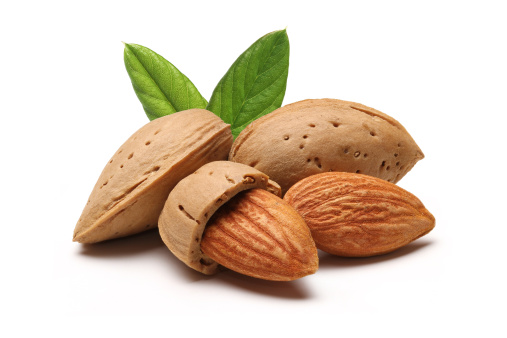Beauty Blog
Red Algae, the crimson-coloured sea beauty

Red Algae, the crimson-coloured sea beauty, And first-rate ingredient to know about
There are many species of Algae with the main ones and those we recognise most … red, green and brown. Floating around, laying on the sand, growing on rocks, these slippery sea plants brush up against us while we paddle about and swim at the beach.
Algae are very distinct. They are found across our world and play a vital role in the ecosystems and aquatic food chains.
They are tasty and full of goodness and known as sea vegetables. Fish love to eat them and so do we. Added to soups and salads, if you’re a fan of sushi, you’re in luck.
The pretty, crimson-shaded sea beauty, Red Algae, are a rich source of minerals, carbohydrates, protein, enzymes and fibre and a type of phylum Rhodophyta (a specific set of red algae).
So, what makes them red? It’s the phycobilin (water soluble) pigments – phycoerythrin and phycocyanin which have gorgeous red tones.
Red Algae have been used since ancient times as both a food source and for their medicinal properties. A surprising fact is their mineral content has been found to be 20 times more than that of plants grown on land.
A helping hand to health and skin, it’s said they can promote a healthy circulation and lower bad cholesterol levels, thanks to their high levels of dietary fibre. Their plentiful supply of calcium and magnesium is valuable in bone health and also beneficial to the immune system, thyroid function and blood sugar levels. More recently, studies have shown their effectiveness in controlling yeast growth and the virus that causes herpes.
Key nutrients found in Red Algae include Omega-3 fatty acids, Vitamins B12, C and E, minerals, a wide range of Carotenoids including Astaxathin and Beta-carotene. Astaxanthin, categorised as a carotenoid, helps to combat and neutralise free radicals by protecting cells against oxidation, which can lead to damage and inflammation. Certain bioactives found in Red Algae, such as Carrageenan, serve to protect the skin from environmental stressors.
Packed with antioxidants, Red Algae help improve skin health and nourish it as well. The potassium and the carbohydrates found in Red Algae can help reduce hyperpigmentation, wrinkles, dry skin conditions and inflammation.
This superhero Algae also boast Vitamin A and C providing anti-microbial and skin brightening effects. Some studies have revealed that as a moisturising compound they are a better humectant than hyaluronic acid. Preserving the skin’s natural moisture levels, Red Algae promote skin smoothness, a healthier skin barrier, collagen production and enhance elasticity.
Hydrating and nurturing dry skin, Red Algae’s pulp-like texture helps them store plenty of water and, when included in skincare products can help draw water to the skin’s surface. Its unique plumping action makes it effective in reducing wrinkles and lines and, as we’ve mentioned, enhance moisture. It’s also helpful in balancing the skin, particularly after using irritating or drying acid facial treatments.
Red Algae also support the skin in another way by providing exceptional protection against UVA and UVB rays.
You can find Red Algae in our Seaweed Gel, a brilliant weekly treat for the eyes that eases puffiness and dryness, addresses dark circles and enlivens tired eyes.
This multi-action gel is specifically formulated to take care of delicate skin, maintaining hydration levels while it smooths, firms up and tackles finer lines and crinkles.
Now here’s the bonus, this pure Ayurvedic formula is a dream come true doing double duty as a quick ‘mini face mask and pick me up’ refreshing, hydrating and brightening the skin. Try it, you’ll love it.
The benefits of Hibiscus are truly amazing

Surprising Hibiscus
The benefits of Hibiscus are truly amazing.
Often referred to as nature’s botox, firming up the skin. It also has anti-inflammatory benefits to soothe and is rich in antioxidants to guard against free radical damage.
Hibiscus contains Anthocyanins, a group of antioxidants that give plants their bright colours (pigments) and are found in deep red, blue and purple fruits and veggies.
Anthocyanins form part of plant-based chemicals called Flavonoids, which are plentiful in the seeds, fruits, shoots, flowers and leaves. Flavonoids do many things for plants like protecting them from environmental stressors, think UV light, the cold and also drought.
In terms of the skin, in skincare and other cosmetic products, Flavonoids offer potent antioxidant defence and can protect against UV rays and have a soothing action.
In Ayurveda, Hibiscus has been used to treat many skin conditions. It is packed with minerals, antioxidants and vitamins to help the skin look more youthful and supple.
Nourishing and very hydrating, Hibiscus is a source of protein, calcium, copper, iron, magnesium, manganese, potassium, zinc, Vitamins A, B6, C, E and K and also contains niacin, thiamine and riboflavin, malic acid citric and alpha hydroxy acids that also aid the skin.
Hibiscus seems to have an endless list of skin benefits from fighting ageing to deep cleansing to treating acne.
Here are just some to learn about:
The Anthocyanins boost elasticity and help skin cells recover from UV damage and other pollutants.
Hibiscus can help dark and age spots and other discolouration, evening out and revamping tone.
It can relieve dry, flaky and itchy skin, helping smooth and soften texture, thanks to its power+ hydrating properties.
It’s a great gentle yet deep cleanser and its natural acids help polish off dead cells and keep pores clear.
The astringent properties in Hibiscus help tighten open pores and its Vitamin C helps firm up the skin.
It helps clear clogged pores and as it has anti-bacterial properties it fights acne causing bacteria helping prevent pimples forming.
Hibiscus makes a great moisturiser and nourisher, locking in moisture in skin tissues.
The anti-inflammatory action of beta carotene in Hibiscus helps relieve inflammation, itching and redness. And, it can also be effective in protecting skin cells against inflammatory damage.
So many benefits to Hibiscus and here’s just one more that you could try at home as an alternative ….
Our Hibiscus Body Cleansing Scrub is gentle enough to use on the face for fabulous results and a glowing complexion. Mix a little of the dry powder with plain organic yoghurt or our Saffron Oil, making into a spreadable paste and apply to the face (avoiding the eye area and lips). Leave for 5 minutes, pat with warm water and work off using circular motions, then rinse away thoroughly and follow with your regular OmVeda day or night cream.
Almonds for the skin
Amazing Almonds
Almonds come with a very extensive nutritional cv. They are a great source of vitamins B (riboflavin and niacin) and E, protein, fibre, manganese, magnesium, copper, phosphorous, calcium and zinc. Although high in fat, Almonds contain the good kind.
And while we know them as a nut, an Almond is actually a seed of a fruit from the almond tree.
Almonds also have a long, long history.
Much in the same way as we value their benefits today, research shows nomadic tribes ground up kernels for energy boosting snacks as far back as the 4th century BC. And, it’s also said King Tutankhamen was buried with Almonds to sustain him in his afterlife.
Delicious and filling, the protein in Almonds keeps the munchies away, making them a favourite nibble and afternoon pick up, including at our office.
They have a good health resume as well …
The calcium and phosphorous in Almonds is reported to help strengthen bones and improve bone health.
They may also help with heart health, protect against high blood sugar levels and in weight reduction.
Tasty and full of goodness, they are enjoyed raw, roasted, used in baking and many other recipes.
Research offers that certain kinds of foods included in the diet can be a natural way to a healthier skin. While there appears to be limited research on Almonds effects on the skin, they certainly earn a place in the diet.
It is believed Almonds are a tonic for the skin when used topically, including oil or extracts.
As they are packed with antioxidant vitamin E they can help neutralise free radicals that contribute to the ageing process.
Almonds also contain linoleic acid, an essential fatty acid that can help keep the skin supple and prevent dryness.
Their zinc content can help support the integrity of the skin and their source of copper plays a role in pigmentation.
Almonds are impressive skin polishers and rid the skin of impurities. Finely crushed shells and hulls of the Almonds are used in face and body exfoliators.
Sweet Almond Oil (Prunus Amygdalus) which comes from the seed kernels of the Sweet Almond tree is used as a replenishing and moisturising ingredient in many skin and body care products. This includes our Diamond, Pearl, Silver Day and Gold Day Creams and the Turmeric Cellulite Cream.
While we generally eat them raw or maybe roasted, there’s a question about soaking them overnight.
Soaking them helps break down their tough shell, making them easier to digest. Soaked Almonds release the enzyme, lipase which is said to support the process of digestion. Soaking also helps free them of their slight bitterness so their buttery texture is tastier.
The jury is still out on soaking v/s eating them in their natural form, regardless of how we decide to enjoy them, Almonds are definitely one of nature’s superfoods.
Boarding now for healthy, radiant skin: Carry your OmVeda Travel Pack
Savvy travellers to pack
Road trips, overnight stays or playing diva for a weekend, our Travel Kits are a must and there’s one for everyone.
We know it’s not easy to edit beauty needs so we’ve taken care of that with our travel-friendly Kits. Fabulous mini versions of OmVeda indulgent must-haves and your favourites in just right 25ml sizes.
Each product works hand in hand to keep skin and body naturally healthy, silken and smooth. These little herbal beauties make great gifts and are perfect as a starter kit for teens or first timers to OmVeda.
So, so practical to stow in your carry-on for short or long hauls (and afterwards) or top-drawer stashers at the office. Each Kit is packaged in a soft, wrap-around, pouch design, made from 100% unbleached cotton canvas. They can be washed and used again and again, and again.
There are five (5) in our Travel Pack collection and here’s the line-up …
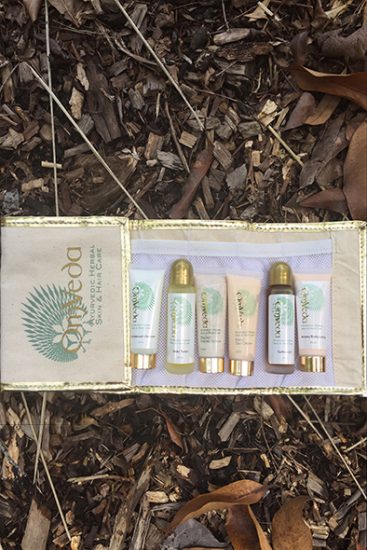
Gold Essential Kit – Sandalwood Cleanser, Walnut Scrub, Gold Toner, Gold Day Cream, Saffron Oil and Rehydrating Body Lotion or Honey Body Lotion.
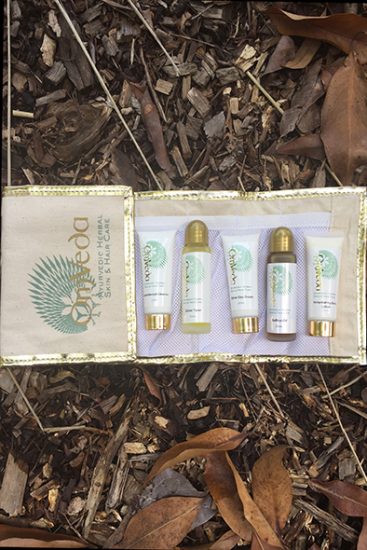
Silver Essential Pack – Sandalwood Cleanser, Silver Toner, Silver Day Cream, Saffron Oil and Rehydrating Body Lotion or Honey Body Lotion.
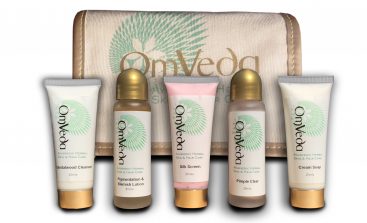
Essential Anti-Blemish Kit – Sandalwood Cleanser, Cream Soap, Pigmentation and Blemish Lotion, Pimple Clear (spot treatment) and Silk Screen.
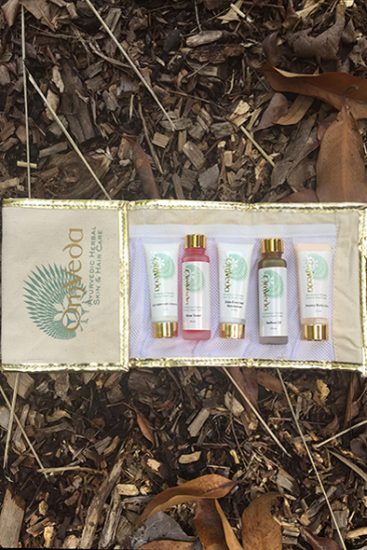
Essential Travel Kit – Sandalwood Cleanser, Rose Toner, Date Enriched Moisturiser, Saffron Oil and Rehydrating Body or Honey Body Lotion.
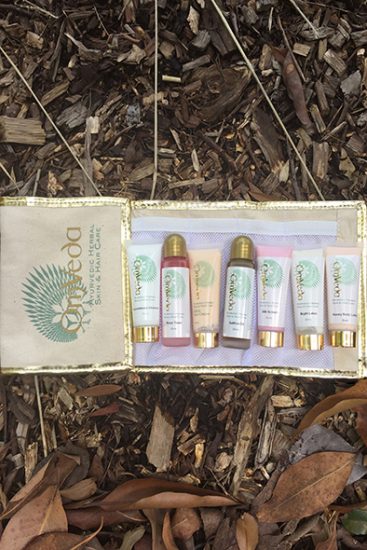
Luxe Pack – Sandalwood Cleanser, Rose Toner, Gold Day Cream, Saffron Oil and Rehydrating Body Lotion or Honey Body Lotion, Silk Screen and Night Lotus.
Simple steps for Dry and Dehydrated skin
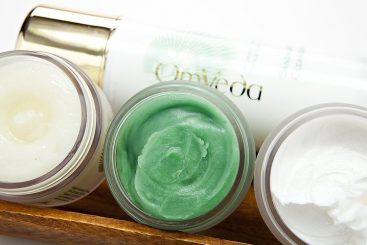
Natural and Organic
Dry skin, which is a skin type, stems from a lack of oil or sebum in the dermis. Sebum helps protect from moisture loss. The skin can be flaky, itchy and ‘rough’. Those with dry skin will notice that the entire body will also be dry, the legs, lips, hands and even the scalp and dry skin will drink up moisturisers, oils, creams in a snap.
Dehydrated skin, on the other hand, is triggered by a lack of water and moisture in the dermis and is a condition rather than a skin type. The skin looks dull, feels tight and lines and wrinkles can be more prominent. Usually, dehydrated skin is caused by lifestyle factors ie not drinking enough water, alcohol and/or overdoing it with harsh products.
Did you know that oily skin can also be dehydrated? Although sebum levels are high, water levels are low. When treating oiliness/excess oiliness, breakouts or acne, the products we use can be too drying and sometimes irritating causing skin to become dehydrated.
A few simple soothing things to do at home:
Avoid hot, long showers, as great as they are after a stressful day, they wash away the skin’s natural oils and dry out the skin.
Change to a creamy face cleanser that takes care of impurities, everyday dirt and make up and leaves skin smooth and feeling supple.
Exfoliate with a gentle face scrub like our Walnut Scrub and a body scrub weekly. Important as dead, surface cells build up, keeping the skin from absorbing the goodness of products to follow like moisturising cream, facial oil, body lotion, oil or night cream. Gentle exfoliation regularly helps the everyday skincare work more effectively.
Switch to a more nourishing face cream and add a face oil such as our Black Seed Oil to the everyday skincare routine.
Add a night cream, like our Night Nourishing Cream before bedtime. Mix a few drops of face oil with the night cream and spend a few extra minutes massaging in.
Check skincare labels for added alcohol and fragrances, as they can cause more upsets, drying out and irritating the skin.
Opt for a body wash such as our Body Gel instead of bar soap, which can be drying.
Gently pat-dry the body (rather than rub with a towel) and moisturise immediately after showering. A little oil, such as our Calming Massage Oil (warmed) post shower can also help keep skin soft and supple.
Treat the scalp to a warm oil massage treatment weekly. Our Herbal Hair Oil benefits both scalp and hair.
Apply a replenishing mask weekly, like our Mango Butter Face Mask.
After washing hands always apply a moisturiser.
Boost water intake to help hydrate the body.
Protect skin from the outside elements by wearing gloves and a scarf when the temperature drops.
In summer, always apply an SPF, wear a hat and shield eyes with sunglasses.
Strawberries have a place in our skincare routines
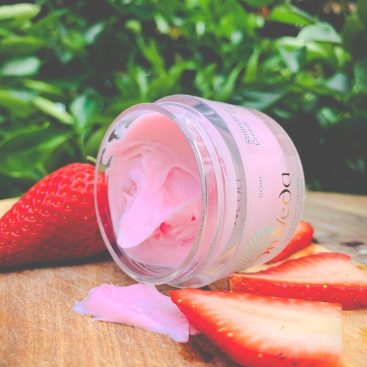
Strawberries are a super food with a place in our skincare routines and our diet –OmVeda Strawberry Cream 50mls – Omveda
STRAWBERRIES, LUSCIOUS HEART-SHAPED BEAUTIES
Did you know that Strawberries are not fruits or berries but belong to the Rose family.
These heart-shaped lovelies are packed with vitamins like C, B9 and K, antioxidants known as polyphenols, manganese, fibre and potassium.
We all love to eat them fresh, delicious in smoothies and yoghurt however, strawberries are pretty awesome for the body and the skin.
Being a source of vitamin C, strawberries are a well-recognised immunity booster and an essential for skin health, B9 (or folate) is crucial for cell function and normal tissue growth and potassium is involved in many key body functions including regulating blood pressure.
When it comes to the skin, strawberries get serious.
The Vitamin C in strawberries helps improve skin elasticity and resilience, brighten dulling skin and overall boost radiance.
They contain the amazing Ellagic Acid which guards against collagen destruction, a major cause of lines and wrinkles and also has a photo-protective effect that works to protect against UV damage and keeps the skin looking healthy.
The Folic Acid in strawberries aids in cell regeneration and keeps skin looking youthful and supple.
Plus, they contain Salicylic Acid to help address acne, reduce dry, dusty surface cells and fight excess oil.
Strawberries are a super food with a place in our skincare routines and our diet.
Waterless Beauty care – less impact on the environment
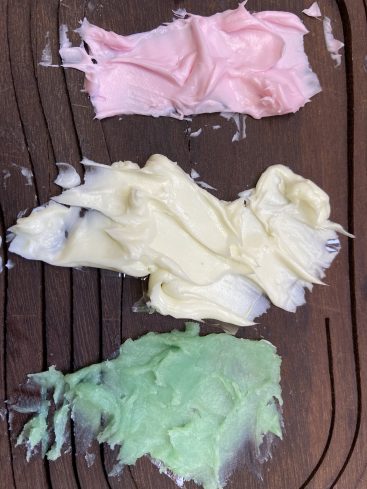
Waterless Beauty care is also less of an impact on the environment
Waterless Beauty care is also less of an impact on the environment
OmVeda Creams are waterless
So, what does Waterless Beauty/Skincare mean and what are the benefits?
Waterless Beauty/Skincare is the concept of making creams and/or lotions in a formula without water and replacing it with oils, waxes or butters.
Why?
Well, waterless products have many advantages … more concentrated and more potent formulas, which means your products will last much longer as you don’t need to use as much … more active ingredients, more natural wholesomeness, less irritation and less drying to the skin.
Using waterless beauty care is also less of an impact on the environment as precious water supplies are conserved and by eliminating water in our skincare products we are effectively reducing the size of packaging and waste. So, it’s great for the consumer and for the planet.
Did you know that OmVeda creams and lotions have always been waterless? We use beeswax (cera alba) and oil as our base. That’s why our day and night creams and lotions have a thicker consistency.
Waterless Beauty is one of the biggest trends to sweep the beauty industry for 2022.
It’s not a trend for us, but who we are and have always been.
Using waterless products is more effective and kinder to the skin. Adding water to skincare makes for a lighter texture, however, if your skin is parched and thirsty you will need to use more product to achieve the desired result.
Water can often be a breeding ground for bacteria and germs and to counteract and kill off the bacteria, products that are water rich contain high levels of preservatives which can irritate the skin.
Lighter formulations can also necessitate the use of alcohol to soften and blend the formula and alcohol can irritate sensitive skins and also create dry patches.
Check out the skincare label for the products you’re using at the moment. Where is the water mentioned? If it’s at the top of the list you know it contains a lot of water.
Now is the time to experience the benefits of our waterless skincare. Your skin will thank you for it. And you’ll notice the difference.
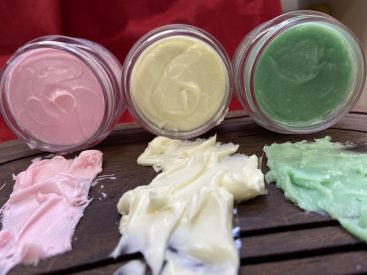
Waterless Creams
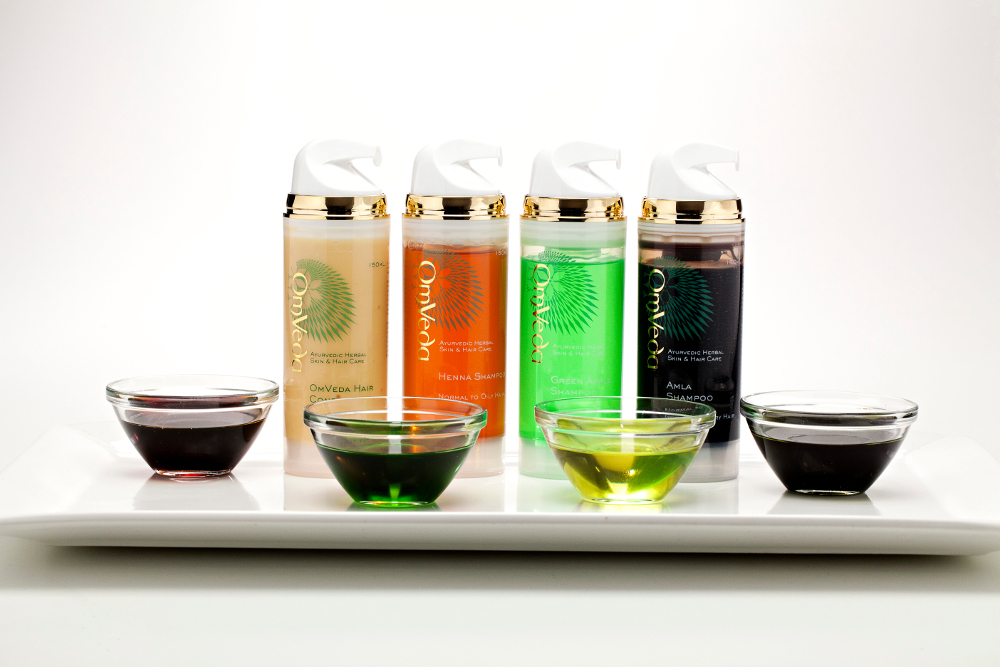
Ayurvedic Treatments for Hair Loss
According to your expertise as a wellness pro specialising in Ayurvedic medicine, could you please tell me the reasons hair falls out in women?
According to Ayurveda, the hair is derived either as a by-product or produced as a breakdown product of Asthi (bone tissue). Any disturbance in this tissue metabolism, which very much depends on the digestive fire, can affect the health of the hair. To a certain extent, the quality of hair depends on the body constitution.
The major causes of hair loss/hair fall are hormonal, nutritional deficiencies and complications relating to some diseases and medications.
Hormone related hair loss may also result from an increased sensitivity of hair follicles to male hormones or due to greater number of male hormone receptors attached to the hair follicles. This is the component that is inherited through the genes — termed as Pitta constitution.
For example an excess of Pitta Dosha in the body is increased by hot climatic conditions, excessive intake of spicy, salty and sour food, hot and sharp food, tea, coffee, alcohol, meats and excessive smoking. Eating too much fried, oily, greasy, and acidic foods also aggravates Pitta. Pitta balancing herbs (Eg: Shatavari —Asparagus) and vegetables which improves the quality of Asthi dhathu (Eg: bitter vegetables) are effective in treating hair loss/hair fall.
Unfortunately, hair loss has become more common in modern times. Our stressful lifestyles, increasing environmental pollution and unhealthy food habits are all factors that cause damage to our health and, as a result, are reflected in the quality of our hair.
There are three main reasons for hair loss.
Firstly, anyone with an imbalance in Vata dosha is more prone to hair loss. The Vata dosha is responsible for movement and transportation of food nutrients through the empty channels and spaces of the body. Excessive or imbalanced Vata dosha can result in an obstruction in the flow of the food nutrients that supply nourishment to the hair cells, leading to a dry scalp, dry hair, split ends, and finally thinning hair or hair loss.
Secondly, healthy hair also depends on healthy bones. This is because hair and nails are by-products of the process of transformation from food to bones.
The third reason for hair loss is ageing, from about 60 years onwards. This later time in life is governed by Vata dosha, which as I have mentioned earlier, results in increased hair loss.
Other factors, also associated with Vata dosha, include: genetics/Vata body type, severe illness, post-pregnancy; rapid weight loss (which can result in slow but significant hair loss), worry, anxiety and stress, dry scalp, severe and uncontrollable dandruff, irregular lifestyle routine, excess travelling, variable eating habits, lack of sleep, eating cold foods, deep-fried foods, packaged, processed, canned or frozen foods, too much sugary foods or foods with chemical additives.
All of the above can disturb the digestion and create digestive toxins resulting in an increase in Vata dosha.
Other causes include smoking, excess alcohol, consuming too much vinegar, pickles, carbonated drinks and spicy foods. In addition, pulling the hair back or up too tightly, using hair rollers, hot and over blow-drying, using too many harsh hair dyes, chemical shampoos, setting gels and hair sprays and, using polluted water for drinking and hair washing.
There are a number of other causes for hair loss/fall such as illness, high stress, thyroid imbalance, certain drugs, sudden weight loss and high fever.
Those with a Kapha dosha do not usually have a major problem with hair loss as they tend to be calm and generally have strong bones.
A diet high in protein and rich in iron is recommended for hair loss. An adequate intake of fresh raw vegetables, including green leafy vegetables, fresh fruits and salads should be included in the diet on a regular basis.
Topically, OmVeda recommends home care treatment of:
A natural herbal shampoo (such as our Amla Shampoo) to cleanse the hair and nurture the scalp. Amla (Embilica officinalis) and Shikakai (Acacia concinna) are excellent for washing the hair. OmVeda Amla Shampoo – 150mls V – Omveda
Oiling and massaging of the scalp is also very beneficial in reducing, controlling and further preventing hair loss. Pure, herbalised oils such as the OmVeda Neelini Hair Oil or Brahmi Hair Oil are beneficial. The oil is applied to the scalp, massaged gently into the roots and left on overnight.
OmVeda Neelinin Herbal Hair Oil – 100mls V – Omveda
OmVeda Brahmi Hair Oil – 100mls V – Omveda
Using Ayurvedic medicine principles, what would you suggest to remedy the hair loss issue?
For best results a holistic approach is recommended. A change in food and eating habits and lifestyle are quite often necessary.
In severe cases, taking herbs internally as prescribed by an Ayurvedic Doctor or Naturopath is highly recommended.
Whether Pitta or Vata imbalance, the external herbal solution is to use the appropriate Herbal Hair Oil eg OmVeda OmVeda Neelini Hair Oil which can be used by both or OmVeda Brahmi Hair Oil for Vata as it contains Gota Kola and Valerian with Brahmi which helps to reduce stress. The Brahmi Oil is also good for jet lag which can contribute to excess Vata disorder.
Highly beneficial is massaging oil into the scalp and leaving it on for a minimum of 1 hour (overnight is best). Washing the hair with either OmVeda Amla Shampoo (Vata), Henna Shampoo or Green Apple Shampoo for Pitta. Henna has cooling properties and helps to reduce heat in the scalp.
A must for Pitta is the OmVeda Hair Tonic which is a non-oily tincture for daily use. It contains Mint, Triphala and Bael Fruit that together helps to cool the scalp and promote hair growth. OmVeda Hair Tonic – 100mls V – Omveda
Would you suggest different hair-loss defence tactics for different Doshas? Can you elaborate?
Diet would be different for Vata and Pitta. The strength of scalp massage would also vary. For example Vata slow with light pressure ~ Pitta medium pressure and strength and a vigorous massage is best for Kapha doshas, as they require stimulation.
In the salon we would recommend:
Our Shirodhara treatment, particularly for an imbalanced Vata dosha, which displays signs of stress, hair loss, insomnia, anxiety and fear, for example. Shiro means head and dhara – flow of oil, so Shirodhara translates to the flow of oil on the head. This 45 minute to 1 hour treatment uses a specific herbalised oil to help calm the mind and balance or cool diminished doshas within the body. It is said to release serotonin resulting in an overall sense of well-being and relaxation.
Another is our Hair Spa Treatment which combines a warm oil scalp massage using a customised herbal oil (either the OmVeda Brahmi Oil or Neelini Oil) and the Neelini Hair Mask. Following the hair mask, the head is wrapped in muslin and kept warm to allow the goodness of the herbs to be readily absorbed. After which the hair and scalp are cleansed with the Amla, Henna or Green Apple Shampoo and the scalp spritzed with the OmVeda Hair Tonic.
Visit www.omveda.com.au, email [email protected] or call +61 2 4201100
Anti-aging properties of Ayurvedic Skin Care
Vayasthapana means maintaining youthfulness or arresting age. Vayasthapana herbs give support to the skin by balancing the skin, example, Centella Asiatica (brahmi, Indian pennywort) is rich in amino acids, beta carotene, fatty acids, and numerous potent phytochemicals. Extracts have been found to calm inflammation, speed wound healing, stimulate new cell growth, build collagen, and improve circulation. One of its many properties is to enhance collagen synthesis.
Varnya means to brighten skin glow. – Varnya herbs have the ability to enhance the radiance or brighten skin. Tyrosinase inhibition, is the most commonly reported method of skin lightening and brigtening. Dull skin is not considered youthful from an ayurvedic perspective. Varnya herbs include sandalwood, vetiver, Indian madder and Indian sarsaparilla to name a few.
Kantivardhaka promotes lustre, Sandhaniya (cell-regeneration), Vranaropana (deep healing) – red sandalwood and brahmi, Tvachya (nurturing) Gotu Kola, Silk Cotton Tree, Costus and Rose Petal are the most widely used, Shothahara (anti-inflammatory), Tvachagnivardhani (strengthening skin metabolism) and Tvagrasayana (retarding aging) herbs that are considered beneficial for skin health.
Feeding the skin properly is very important to prevent it aging.
Ayurveda described Skin (twak) in seven layers (As per Acharya Susruta). The outermost layer is called Avabhasini, reflects the complexion and the quality of the Rasa Dhatu (nutrient fluid, the first of the seven tissues of the body). It also acts as a mirror as it indicates whether the physiology as a whole is balanced or imbalanced, and whether there is inner health or disorder; it also reflects the aura of the individual. Mamsadhara is the innermost layer is the platform for the skin’s stability and firmness. When this layer is in balance, the skin looks young and supple.
According to Ayurveda, many factors decide skin health – three important body tissues that reflect our skin health– plasma (Rasa), blood Rakta and muscle (Mamsa). Plasma keeps the skin healthy, Blood helps in detoxification process along with the liver, while muscles provide firmness to the skin. An effective skin-care herbs should provide support to all these three areas.
A few herbs that are known for their benefits in various skin conditions are aloe vera, neem, Yashti madhu (Glycyrriza glabra), Liquorice, turmeric
Anti-inflammatory (Shothahara) – protects the skin against allergens, inflammatory subtances, chemicals and stress. External environmental factors can cause inflammatory skin conditions. Inflammatory skin is considered a prime cause of aging – it forms a micro-scar that over time develops into a wrinkle or blemish. Inflammatory mediators such as leukotrienes and prostaglandins, cytokines and growth factors target skin texture, integrity and tone. The skin should be protected from the sun. Rose petal, Aloe Vera, Gum resin exudates of Boswellia serrata (indian frankincense), Silver Bhasam are anti inflammatory herbs have been used in the Ayurvedic to manage several inflammatory conditions.
Tvagrasayana means literally ‘skin rasayana’, which refers to refined and powerful formulations to prevent aging of the skin. Phyllanthus emblica (amalaki), a potent antioxidant, rich in Vitamin C, tannins and gallic acid, is foremost amongst the rasayana herbs, it has properties like ajara (usefulness in aging), ayushprada (prolongs cell life), sandhaniya (improves cell migration and cell binding) and kantikara (improves complexion)
What you use on your skin is as important as what you eat. Our aim is to provide you with skincare – “from the earth to your skin as is food for your body”
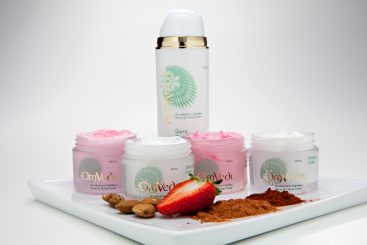
Understanding anti aging from an ayurvedic perspective
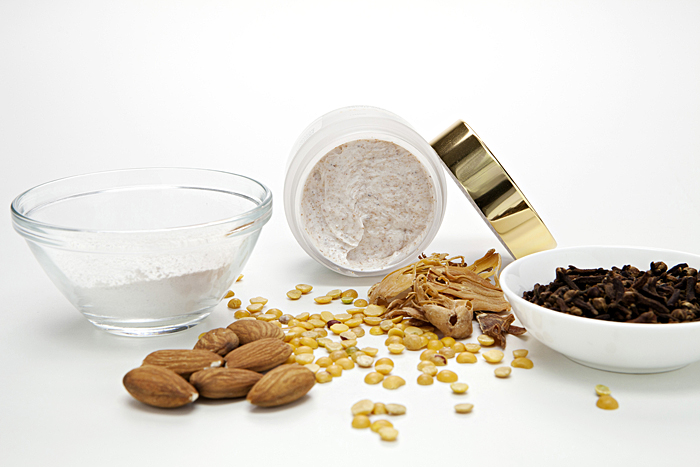
Organic and Natural Skin, Hair and Body Care
Natural and Organic Skin, Body and Hair Care.
We get so many people saying we want to change to natural products which are organic. The truth is there is a plethora of “green products “ and quite often very confusing. Eventually one arrives at a beauty routine that suits them.
We thought it pertinent to generically provide some information on this topic. Remember marketing words are often used to provide a perception and it is up to you to analyse what is and what is not. The most common words are natural, certified organic, organic, wild harvested, wild crafted to name a few. Then someone comes up with a new catch phrase and that becomes the buzz.
One has to remember that is no regulation by any governing body to state that the word natural is defined, so a brand can use natural as a marketing ploy.
Natural skin care can be products that are sourced from plants (plant based), minerals or animal by products (like Lanolin oil which is a secretion from sheep’s skin. It’s similar to human sebum, an oil secreted by the sebaceous glands that you may notice particularly on your nose. Unlike sebum, lanolin contains no triglyceride) . This means a product that contains a handful of natural skin care ingredients can claim it’s natural, despite the addition of synthetic ingredients.
As a discerning buyer reading the ingredients should become a habit. Usually the list of ingredients is from highest to lowest percentages. Some synthetic ingredients are naturally derived like benzyl alcohol used as preservative and is from plants.
Organic Skin Care vs Certified Organic Skincare.
Organic refers to a plant that is grown without chemical fertilisers, pesticides, antibiotics or growth hormones. There is no single accredited body that governs the regulation , but in Australia brands must comply with the ACO guidelines – Australian Certified Organic. To make that claim a formulae must have 70-95% ingredients that are organic. To use Certified Organic the rules are stricter and a product must have 95-99% organic ingredients. They usually have the BUD logo.

